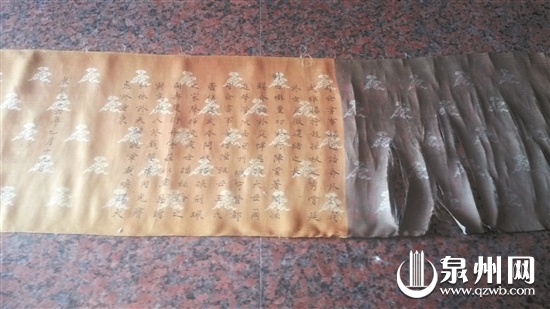A Chinese imperial edict, issued in the 36th year of Kangxi's reign in the Qing Dynasty (1644-1911), was recently discovered in Jinjiang, Quanzhou city, Fujian province.
The imperial edict, with a history going back more than 300 years, is 2.5 meters long and 30 centimeters wide. It was packed in a thick bamboo tube hidden in an ancestral hall of a family surnamed Huang.
The imperial edict is covered with yellow brocade. Its body is made of a multi-layer golden tapestry with white silk thread of Luck Cloud woven as the background lines.
On the two ends are designs of two dragons. The words on the imperial edict are written in both the language of the Manchus and in Chinese characters.
According to records, the imperial edict was issued to Huang Quanshan, whose ancestor was a general.
The whole imperial edict appears dignified, graceful and exquisite.
Descendants of the Huang family have invited experts to authenticate the imperial edict and have planned to copy one to keep in the ancestral hall and leave the original one in a museum for restoration and safe-keeping.
 |
|
A Chinese imperial edict, issued in the 36th year of Kangxi's reign in the Qing Dynasty (1644-1911), was recently discovered in Jinjiang, Quanzhou city, Fujian province. [Photo/qzwb.com] |